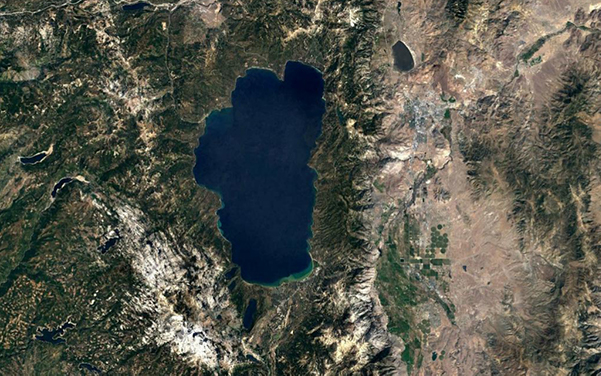Shifting shorelines at Lake Tahoe caused by ancient lava dams
 Geological Society of America
Geological Society of AmericaWinifred Kortemeier, Andrew Calvert, James G. Moore (Contact Author: jmoore@usgs.gov), and Richard Schweickert
Boulder, Colo., USA: Pleistocene basaltic lavas form a small volcanic field that was erupted from seven vents in the northwestern Lake Tahoe basin. Most of these lavas were erupted above the water and produced lava flows that dammed the lake outlet and flowed into an early Lake Tahoe. The resulting steam explosions produced deltas composed of fragmental deposits as well as pillow lavas.
Consequently, three former raised shorelines are marked by subaerial lava flows overlying subaqueous lava deltas. In addition, eruptions from isolated vents on the lake floor produced tuff cones. Six new radiometric argon ages define three episodes when lava erupted subaerially and flowed into the lake. Lava from each of these cycles dammed the lake outlet in the Truckee River Canyon, causing the lake to rise nearly 200 m, after each of which the dams were eroded and the lake returned to near its present level.
The canyon was dammed at 2.3 million years ago (Ma), which raised the lake level from about 1896 m above sea level to 2048 m; again at 2.1 Ma, which raised lake levels from about 1914 m to 2073 m; and finally at 0.94 Ma, which raised lake level to 2085 m. These three raised shorelines indicate that the present outlet of Lake Tahoe through the Truckee River canyon has been operative for at least 2.3 million years.
Read more
Map: Copyright Google 2018




